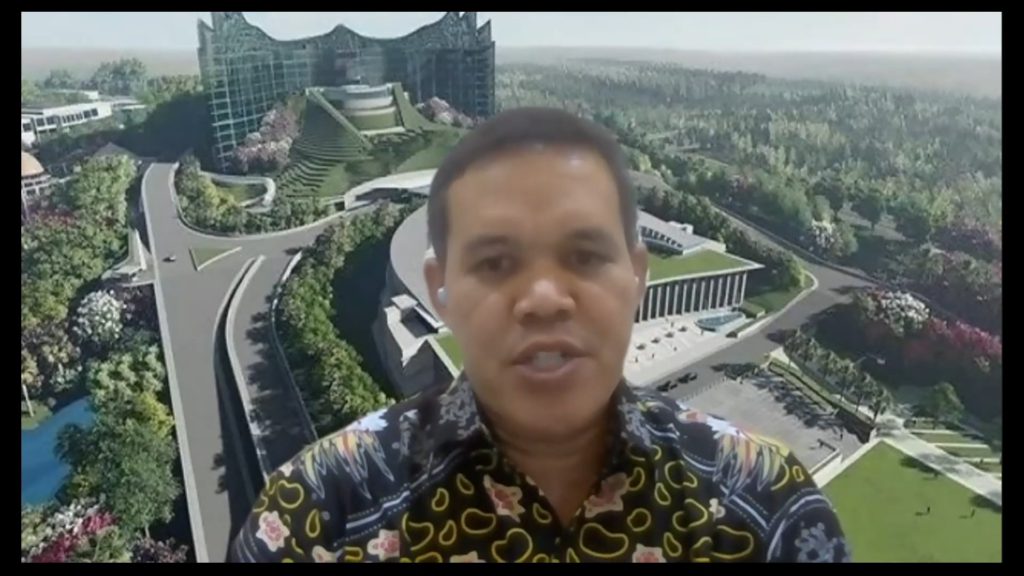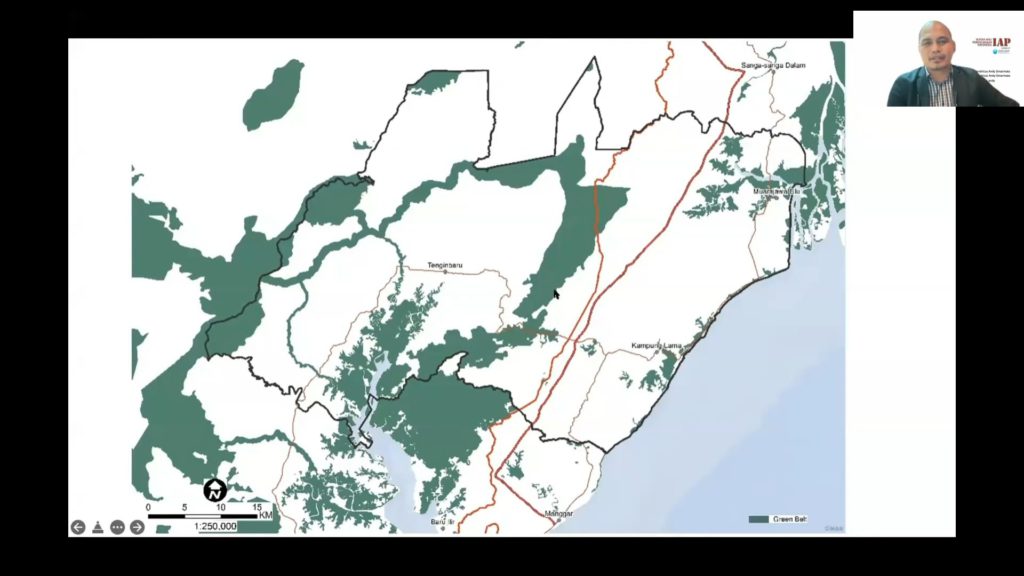Indonesia’s capital city move leaves many questions unanswered
25 MARCH 2022 – The plan to move Indonesia’s capital city has been met with apprehension from the public at large, considering the abrupt speed with which it unfolded despite the lack of official feasibility study documents being opened to the public. The move has been touted as a solution to the myriad of environmental and social problems faced by Jakarta, Indonesia’s current centre of government and economy. However, many are still unsure if the new planned capital in Kalimantan—named Nusantara—will solve problems or open up new complexities.
On 17 March 22, Eco-Business held a panel discussion titled “Nusantara: Asia’s New Green Capital?” and invited four figures to give their perspectives on the topic.

Dr Ichsan 
Dr Jessica Hanafi

Hendricus Andy Simarmata 
YW Junardy
Panellists of Eco-Business discussion “Nusantara: Asia’s New Green Capital?”
Dr Ichsan, Circular Economy and Renewable Energy Business Advisor at PT Bina Karya opined: “The most important thing that the government can do is the vision … everybody in the stakeholder should be able to drive the vision to achieve the goal.” Dr Jessica Hanafi, Founder of PT Life Cycle Indonesia, also stated how there is a societal effect that needs to be reckoned with: “In addition to the physical infrastructure preparation that is already in progress, one of the most important things to prepare is mental preparation … from people in Jakarta as well as in Kalimantan.”
YW Junardy, President Commissioner of PT Rajawali Corporation, cautioned about “land settlement issues, because it [can be] potentially disputed if not done properly.”
This is something that has been an ongoing concern for local residents: in mid-March, Tempo.co reported that people from the customary community of Paser Balik have had their land marked with boundaries for the new capital, without further explanation on what will happen to them.1 A member of the community expressed their disappointment that a presidential visit to the region on 14 March has been focused on ceremonies and symbolism, instead of providing clarity to the people who will be directly affected. Among the agendas of the visit was a much-scrutinised water jug pouring ceremony. The President also led a tree-planting procession on the ‘ground zero’.
“The President has went to Penajam with many local leaders, to send the message that the capital development has paid serious attention to the forestry [aspect] and the environment,” said Hendricus Andy Simarmata, President of the Indonesian Association of Planners (IAP). “We need to know the whole structure of the city, how it can be translated into the spatial planning and their master plan.”
All images taken at the discussion “Nusantara: Asia’s New Green Capital?” held by Eco-Business
While showing a polygonal map of the 250,000-hectare capital boundaries, Hendricus explained: “Many homogenous forests need to be heterogenized so that it can become a healthy habitat for wildlife. They also try to connect the blue spaces of the rivers and the Balikpapan Bay.” Indeed, the existing area, according to planning documents, consists largely of productive forests.
“The plan on paper is a commitment that 75 per cent will be allocated for forestry and green open spaces. But we need to know the monitoring and application tools … to make sure that infrastructure built there uses eco-principles. We are looking forward for the government to set up the monitoring and calculation framework so that those visions will be translated into the programme.”
The audience participated in the discussion with many questions of their own. Robin Hicks asked: “The capital and its proposed extended zone overlap with over 30,000 hectares of dryland forests, swamp, and mangrove forests. In line with the Indonesian government’s commitment in the Declaration on Forests and Land Use at COP26 last year, will areas of high conservation value and high carbon stock forests be protected?”
Another concern was about the energy consumption of the new capital. Gin Keat Ong, tuning in from Singapore, asked: “Many aspects of building and running the new capital will require energy but so far Indonesia is and will continue to be largely dependent on coal for the next few decades. Renewable energy (RE) and clean energy (CE) has not gained as much traction as yet. New construction will generate all kinds of wastes. How can the use of CE/RE be encouraged, including use of waste to energy, urban mining?”
One element that had drawn polarising opinions from the public was the design of the new presidential palace, which resembled a gigantic Garuda bird sculpture made out of glass and stone. Many were skeptical about the building’s environmental effects. Craig Burton commented: “Nusantara deserves the best the world can provide to help it be a future city. It should get the help and support it needs to be zero carbon, but also a highly social city, an important example for the rest of the world. But [it should be] an affordable city, realistic, without totem buildings or absurd architecture.”
Related stories:
COP26 and the Carbon Tax Reform: Indonesia’s Progress Towards Carbon Goals

Greening Asia’s City Streets: Why All Cities Should Prioritise Green Walking

Recognition of indigenous territories for Nature preservation


